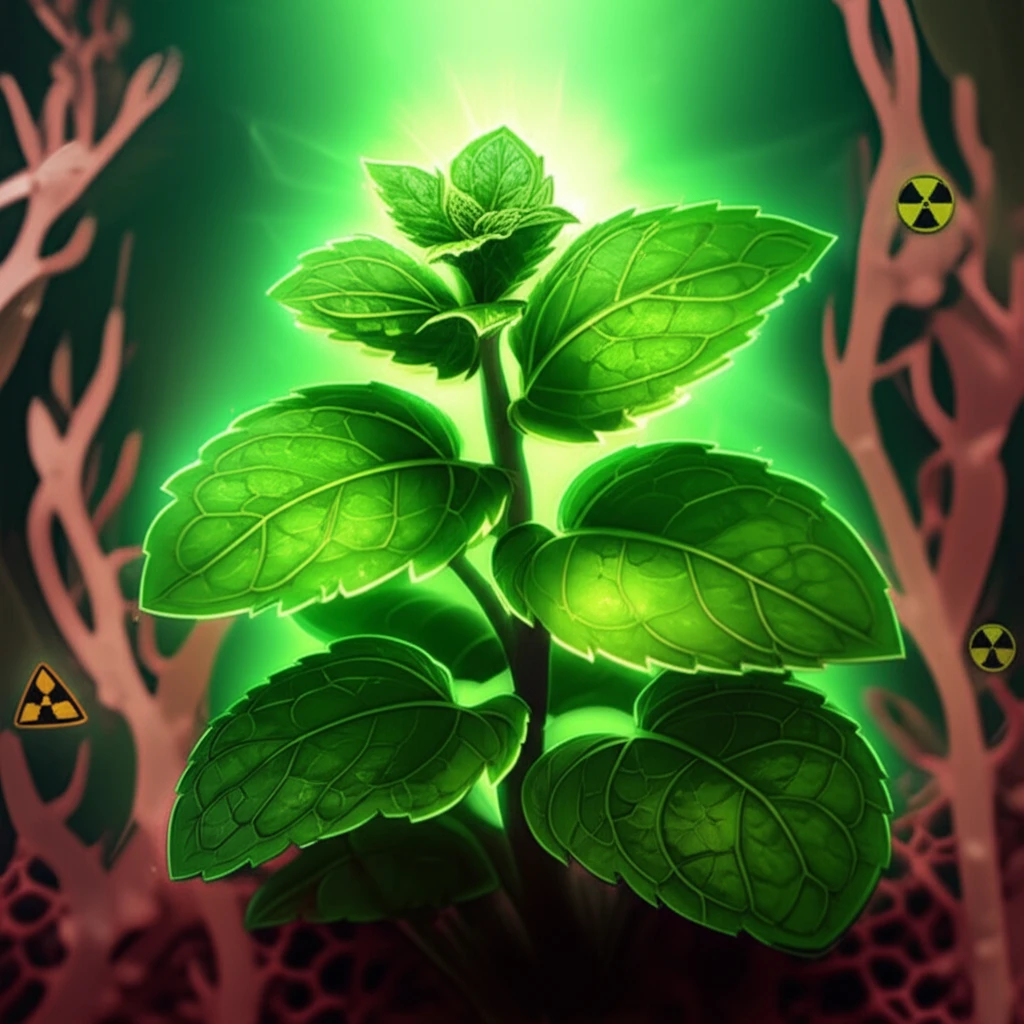
Peppermint Power-Up: How Irradiated Carrageenan Boosts Growth & Essential Oils
"Unlock the secrets of enhanced peppermint production using radiation-modified carrageenan for improved photosynthesis and secondary metabolism."
Peppermint (Mentha piperita L.) is a popular and valuable plant, celebrated for its essential oils that find wide application in the pharmaceutical, cosmetic, and food industries. Its cooling sensation and medicinal properties are highly sought after, making it a staple in herbal teas and various products worldwide. As demand grows, innovative methods to enhance its cultivation and yield are increasingly important.
Carrageenan, a natural polysaccharide extracted from red seaweed, has traditionally been used in the food industry as a thickening and stabilizing agent. However, recent research has uncovered its potential as a plant growth promoter, particularly when modified through irradiation. This process breaks down the complex molecule into smaller fragments, or oligocarrageenans, which exhibit unique biological activities that can benefit plant growth and development.
This article delves into a groundbreaking study exploring how irradiated carrageenan can significantly enhance the growth and essential oil production of peppermint. By understanding the mechanisms behind this phenomenon, we can unlock new strategies for sustainable agriculture and maximize the potential of this valuable herb.
Irradiated Carrageenan: Unlocking Peppermint's Potential?

The study investigated the effects of applying irradiated carrageenan (IC) to peppermint plants through foliar sprays. Researchers used various concentrations of IC, ranging from 40 to 200 mg/L, and compared the results against a control group and a group treated with un-irradiated carrageenan (UC). The key objective was to determine how irradiation-mediated molecular weight reduction and structural modification of carrageenan impact peppermint's growth, photosynthesis, and secondary metabolism.
- Enhanced Photosynthesis: Rubisco activity, a key enzyme in carbon fixation, was boosted by 65.9%, leading to improved photosynthetic efficiency.
- Increased Secondary Metabolism: Phenylalanine ammonia lyase (PAL) activity, crucial for the synthesis of phenolic compounds, saw an increase of 35.6%.
- Boosted Essential Oil Production: The content of essential oil increased by 32.8%, and the yield saw an impressive 88.3% rise.
- Altered Essential Oil Composition: Gas chromatography analysis showed an increase in menthol and 1,8-cineole, desirable components of peppermint oil, while menthone and menthyl-acetate contents decreased.
The Future of Peppermint Cultivation: A Sustainable Approach
The study's findings highlight the potential of irradiated carrageenan as a sustainable and effective tool for enhancing peppermint cultivation. By harnessing the power of natural seaweed extracts and modifying them through irradiation, farmers can achieve higher yields, improved oil quality, and enhanced plant health. This innovative approach offers a promising avenue for meeting the growing demand for peppermint while minimizing environmental impact and promoting sustainable agricultural practices.
